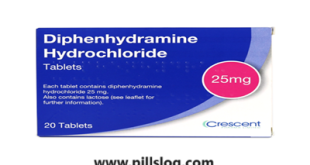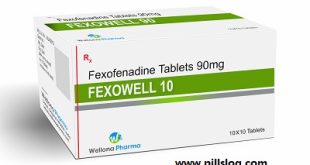Background Diphenhydramine – perhaps known most commonly as its brand name formulation Benadryl – is a first-generation H1 receptor antihistamine that is used extensively for the treatment of seasonal allergies, insect bites and stings, and rashes. However, it also has antiemetic, antitussive, hypnotic, and anti-parkinson properties. As histamine receptors exist both peripherally and in the central nervous system, diphenhydramine has …
Read More »Antihistamines
Fexofenadine – Dosage
Background Fexofenadine is an over-the-counter second-generation antihistamine used in the treatment of various allergic symptoms. It is selective for the H1 receptor, carries little-to-no activity at off-targets, and does not cross the blood-brain barrier – this is in contrast to previous first-generation antihistamines, such as diphenhydramine, which readily bind to off-targets that contribute to side effects such as sedation. Fexofenadine …
Read More »Ketotifen – Uses
Background Ketotifen is a benzocycloheptathiophene derivative with potent antihistaminic and mast cell stabilizing properties. It has a similar structure to some other first-generation antihistamines such as cyproheptadine and azatadine. Ketotifen was first developed in Switzerland in 1970 by Sandoz Pharmaceuticals and was initially marketed for the treatment of anaphylaxis. In the US, it is now used in an over-the-counter ophthalmic …
Read More »Acrivastine – Overview
What is Acrivastine? Acrivastine is a triprolidine analog antihistamine indicated for the treatment of allergies and hay fever. As an H1 receptor antagonist, it functions by blocking the action of histamine at this receptor thereby preventing the symptoms associated with histamine release such as pruritis, vasodilation, hypotension, edema, bronchoconstriction, and tachycardia. Acrivastine is currently available in combination with pseudoephedrine as …
Read More » PillsLog.com | Instantly Drugs information Instantly find your pills from our A to Z list Medicines and Prescription Drug information for consumers and medical health professionals.
PillsLog.com | Instantly Drugs information Instantly find your pills from our A to Z list Medicines and Prescription Drug information for consumers and medical health professionals.



